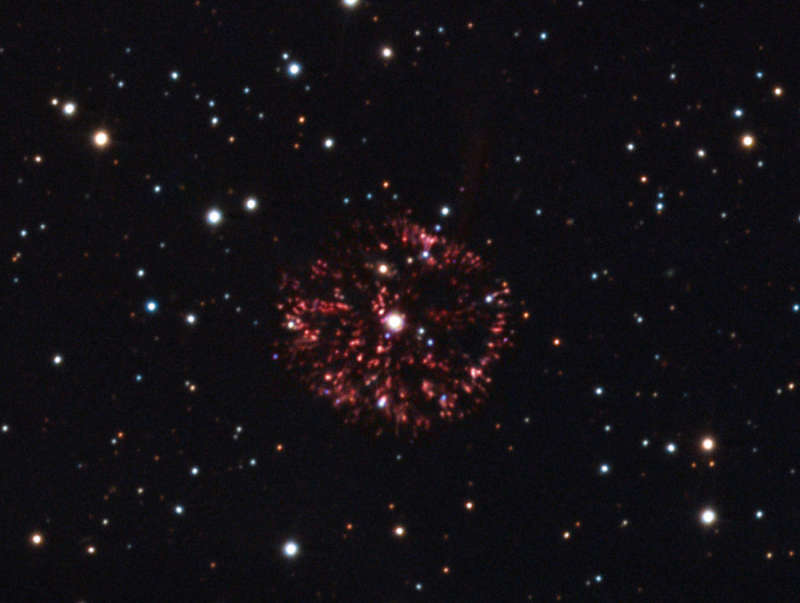GK Per: Nova of 1901

Explanation:
Early in the
20th century, GK Persei
briefly became one of the brightest stars in planet Earth's sky,
an event known as Nova Persei 1901.
Documented in
this modern day composite of two images
from 2003 and 2011 the ejecta from the explosion,
popularly called the Firework Nebula, continues to expand into space.
These images are part of a
time lapse video
tracking the nebula's expansion over the last 17 years.
About 1500 light-years away, the nebula is still just under
a light-year in diameter.
GK Per and similar
cataclysmic variable stars known as
classical novae are understood to be binary
systems consisting of a compact
white dwarf star and
swollen cool giant star in a close orbit.
The build up of mass transferred to the surface of the
white dwarf from the giant star through an accretion disk
eventually triggers a thermonuclear outburst, blasting
the stellar material into space without destroying the
white dwarf star.
With a 2 day orbital period, the
GK Per system has produced
much smaller outbursts
in recent years.
Authors & editors:
Robert Nemiroff
(MTU) &
Jerry Bonnell
(USRA)
NASA Web Site Statements, Warnings,
and Disclaimers
NASA Official: Jay Norris.
Specific
rights apply.
A service of:
LHEA at
NASA /
GSFC
& Michigan Tech. U.

